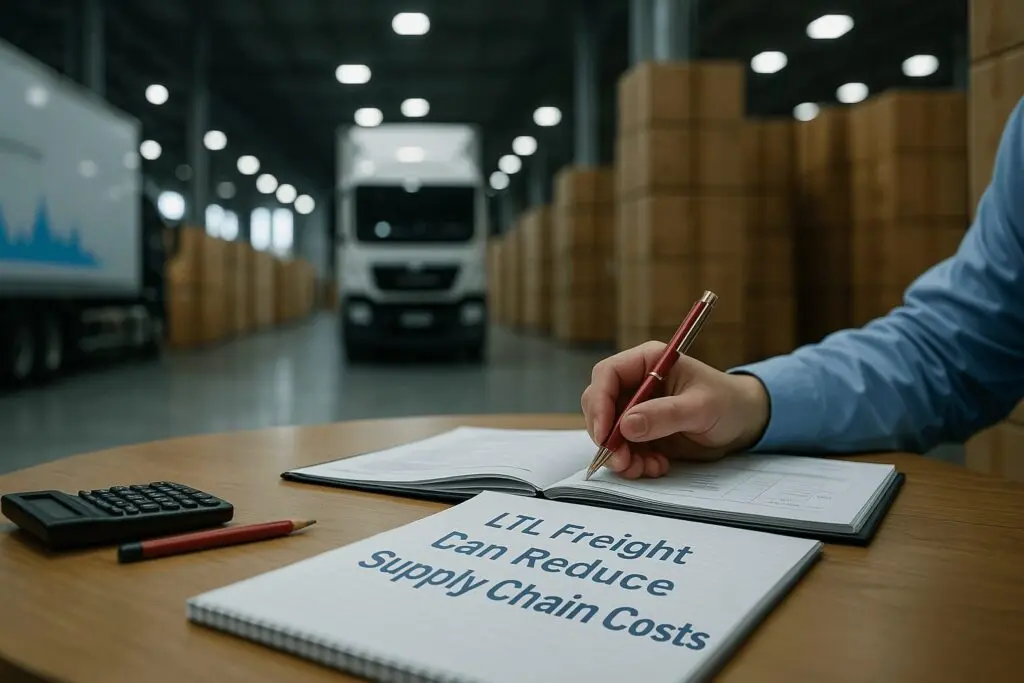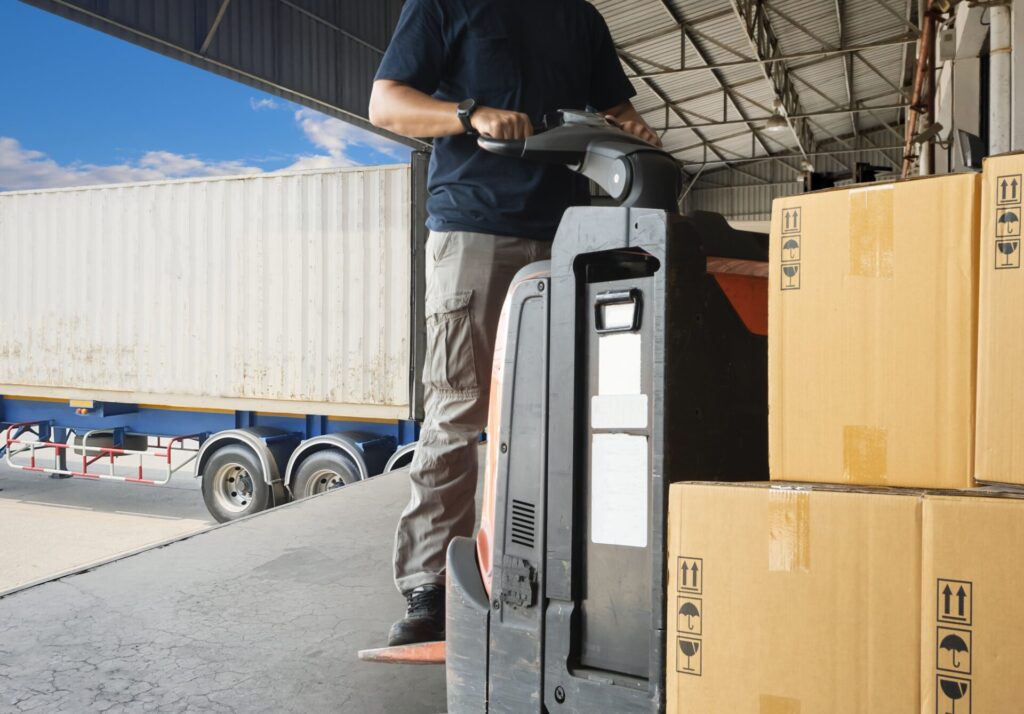
How LTL Freight Can Reduce Supply Chain Costs
In a world of unpredictable demand, soaring fuel prices, and tight budgets, Less Than Truckload (LTL) shipping offers a powerful way to lighten your logistics spend. By consolidating multiple small loads from different shippers, LTL carriers let you pay for just the space or weight you use—an ideal model when you don’t need an entire trailer. But the cost benefits of LTL stretch beyond shared space alone. From reducing warehouse overhead to securing steady volume discounts, LTL can sharpen your supply chain’s efficiency and profitability.
This guide breaks down the economics behind LTL freight and how to integrate it seamlessly into your operation. Whether you’re shipping sporadic partial loads or ramping up frequent distribution lanes, discovering these cost-control strategies can yield significant savings across your supply chain—from inbound materials to outbound customer deliveries.
Introduction
Rising Pressure on Logistics Budgets
Amid inflationary trends and consumer expectations for fast, affordable shipping, cost pressures plague every business. Traditional Full Truckload (FTL) shipping can overshoot budgets if shipments are too small, while parcel services typically handle only lightweight boxes. LTL stands out for bridging that gap. When harnessed properly, it can keep freight expenses in check even as volumes fluctuate.
LTL’s Unique Position in Modern Supply Chains
The basic idea behind LTL is shared capacity—multiple customers split trailer space, distributing overhead. This approach complements contemporary supply chains that favor more frequent, smaller shipments. E-commerce, lean manufacturing, and just-in-time replenishment all dovetail with LTL’s promise of paying strictly for the capacity you actually use.
Key Cost Advantages of LTL Freight
Paying Only for Used Space
Often, paying for a full truck when loads are half or two-thirds empty hemorrhages money. LTL pricing is based on weight, dimensions, and distance—charging you proportionally for what you ship. This model is a boon if your freight rarely fills an entire trailer, letting you avoid wasted space surcharges.
Avoiding Empty Miles in Partial Loads
In an FTL scenario, a truck might run partially filled for long hauls if your load volume dips unexpectedly. With LTL, carriers strive to fill every nook with multiple shipments, maximizing utilization. Consequently, you bear a share of the total cost, but only in proportion to your cargo’s share of trailer space—lowering your average cost per shipment.

Making LTL Work for Your Bottom Line
Consistent Scheduling for Volume Discounts
Many carriers or 3PLs reward regular, predictable shipments. If you can commit, for instance, a few pallets every Tuesday, carriers often negotiate more competitive rates. Demonstrating stable volumes assures them they’ll keep trailers consistently filled, which yields better per-pound or per-mile pricing.
Leveraging Consolidation and Pool Distribution
Consolidation merges your separate small shipments into one bigger LTL load, reducing the total shipping cost. Similarly, pool distribution consolidates shipments heading to the same region before distributing them locally. Both strategies reduce the number of cross-dock handlings, minimize partial charges, and harness the economies of scale typically seen in FTL—without needing to fill an entire truck alone.
Reduced Inventory and Warehouse Expenses
Frequent, Smaller Shipments vs. Large Storage
Warehousing too many goods ties up capital in unsold stock, plus you pay for square footage. LTL fosters frequent restocking in smaller increments—aligning inventory more closely with actual demand. You can keep only a modest buffer in your warehouse, shipping as needed. This “little and often” approach trims holding costs and risk of product obsolescence.
Minimizing Obsolescence through Just-in-Time
Particularly if you sell seasonal items or tech gadgets prone to quick updates, employing LTL to maintain lean inventory means fewer unsold products languishing in a corner. As soon as fresh stock is needed, you dispatch an LTL load—cutting lead times and letting you swiftly pivot if new product lines roll out.
Carrier Collaboration and Negotiations
Rate Agreements and Lane Commitments
If your shipments revolve around certain lanes (e.g., a daily route from your warehouse to a cluster of distribution centers), propose a long-term contract or lane commitment. Carriers appreciate consistent volume, rewarding it with stable or discounted rates. Meanwhile, this arrangement secures you capacity, especially in seasonal peaks.
Packaging Upgrades to Prevent Damage Claims
Damage claims often inflate total supply chain costs—replacements, re-delivery, labor overhead. Upgrading packaging (e.g., using heavier pallets or adding protective materials) lowers breakage in multi-stop LTL. That means fewer claims, less time spent on disputes, and minimal inventory lost.

Visibility and Tech Integration
TMS for Optimized Route Planning
Transportation Management Systems (TMS) unify quoting, scheduling, load tracking, and invoicing. This synergy reveals best-lane carriers, typical surcharges, and real-time shipment progress. Efficient route planning with advanced TMS analytics ensures partial loads are matched to carriers who can handle them cost-effectively and reliably.
Real-Time Tracking to Cut Administrative Overhead
When shipments vanish into multi-stop loops, your team invests time chasing updates or clarifying ETAs. Modern LTL carriers provide online tracking portals or EDI/ API integrations that feed shipment statuses into your system. Automated alerts minimize calls or emails, freeing staff to focus on strategic tasks.
Cross-Dock Efficiencies and Risk Mitigation
Handling Pallets Carefully to Avoid Rework
Each cross-dock event is an opportunity for mishaps—misloading, forklift collisions, or mislabeled pallets. Encouraging carriers (and your warehouse teams) to implement standard operating procedures means fewer damaged goods, minimal reorder costs, and stable transit times. Partnerships thrive when there’s mutual accountability for proper load handling.
Aligning Freight Class Correctly from the Outset
Misstating freight class (based on NMFC codes) leads to reclassification and increased charges. Carefully measure weight, dimension, and density, plus identify commodity specifics. By eliminating class errors, you avoid back-end disputes or surcharges that erode shipping cost savings.
Freight Claims and Lower Liabilities
Carrier Liability vs. Declared Value Options
Standard LTL coverage may reimburse a few cents per pound—rarely enough for expensive goods. Yet paying for declared value or third-party cargo insurance also adds cost. Balancing coverage with shipment risk helps you save money in the long run. Typically, low-value, dense freight can rely on standard liability, whereas pricey electronics might warrant additional insurance.
Cost Savings from Lower Damage Rates with LTL Specialists
Some carriers specialize in handling delicate shipments or offer protective co-loading and minimal cross-docks. Despite marginally higher base rates, they slash claims costs and reduce disruptions. Over time, the net effect of fewer damage incidents can significantly offset any slight rate premium.
Conclusion
LTL freight stands as a strategic resource for cutting supply chain costs—provided you know how to apply it effectively. By splitting trailer space, you pay only for the capacity you use, often trimming overhead compared to half-full dedicated trucks. Meanwhile, leveraging consolidation, scheduling regular shipments, and adopting advanced TMS solutions fosters an environment of minimal waste, robust inventory turnover, and streamlined distribution.
Amid the fast-moving logistics arena, focusing on wise carrier partnerships, thorough packaging, and integrated data can transform partial shipments from a logistical headache into a cost-saving asset. Whether you’re looking to limit storage overhead or expedite localized deliveries, adopting an LTL-centered approach can significantly bolster your overall supply chain bottom line.
How useful was this post?
Click on a star to rate it!
Average rating 0 / 5. Vote count: 0
No votes so far! Be the first to rate this post.



